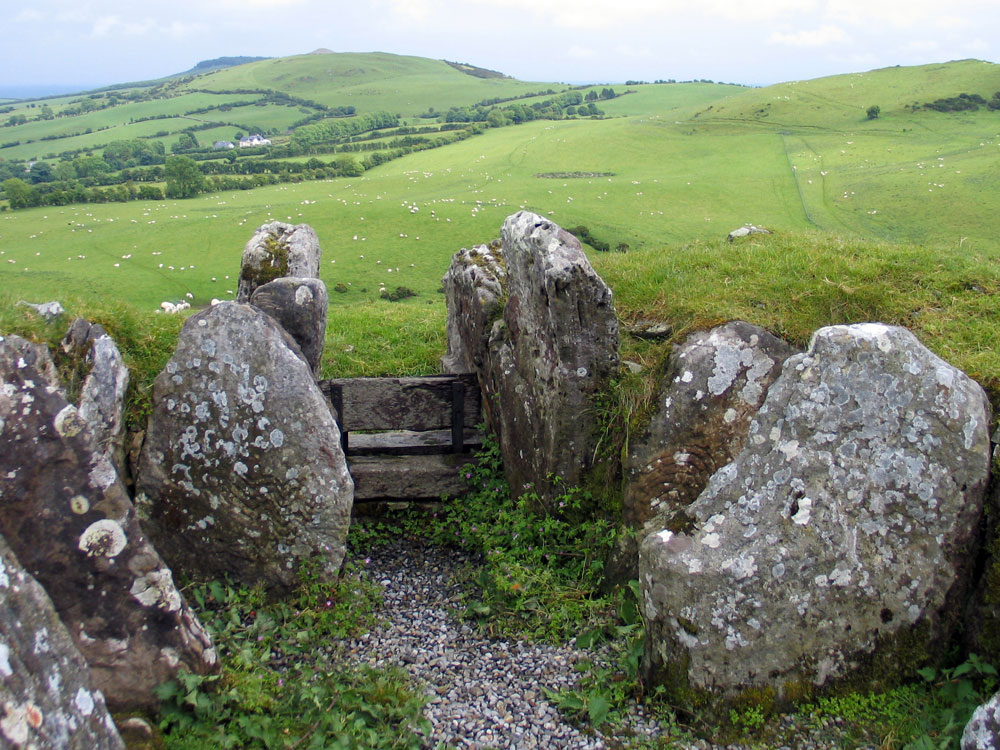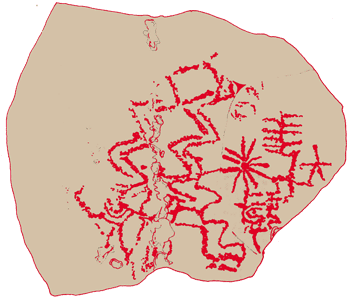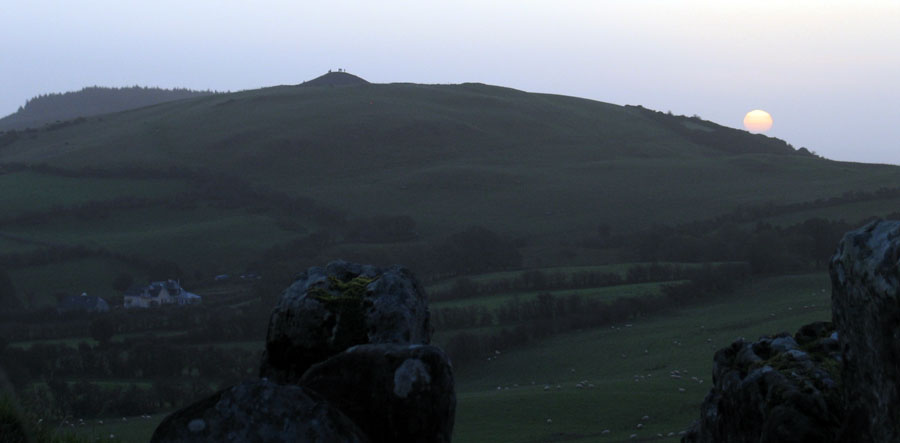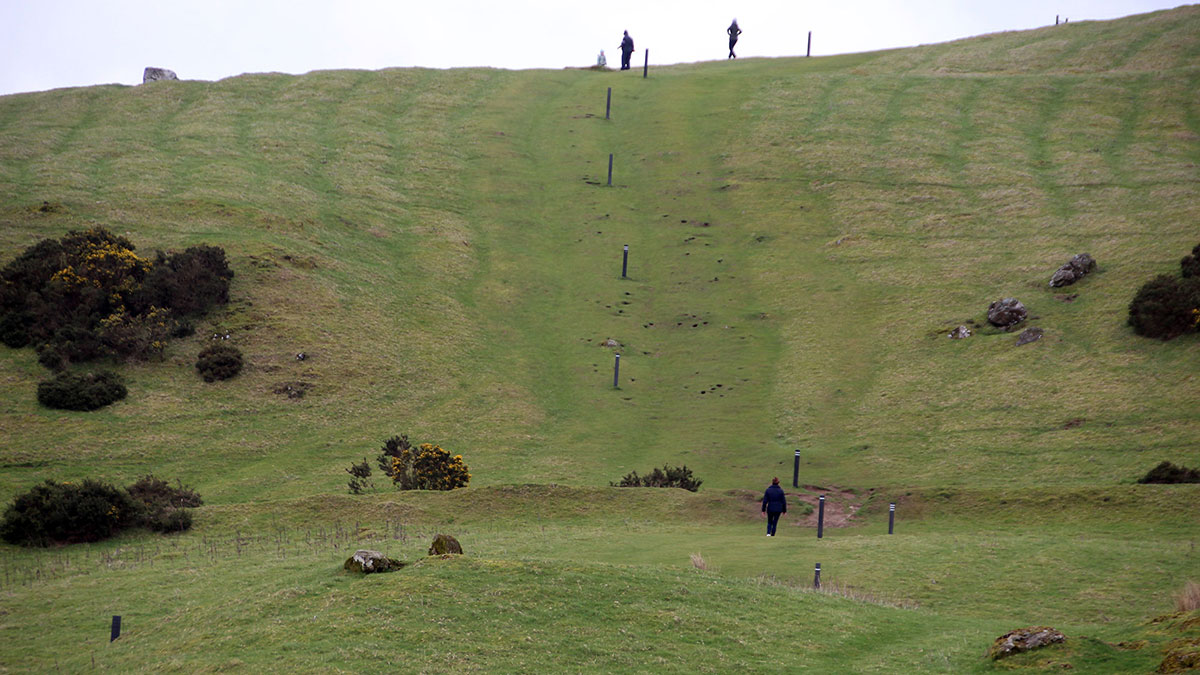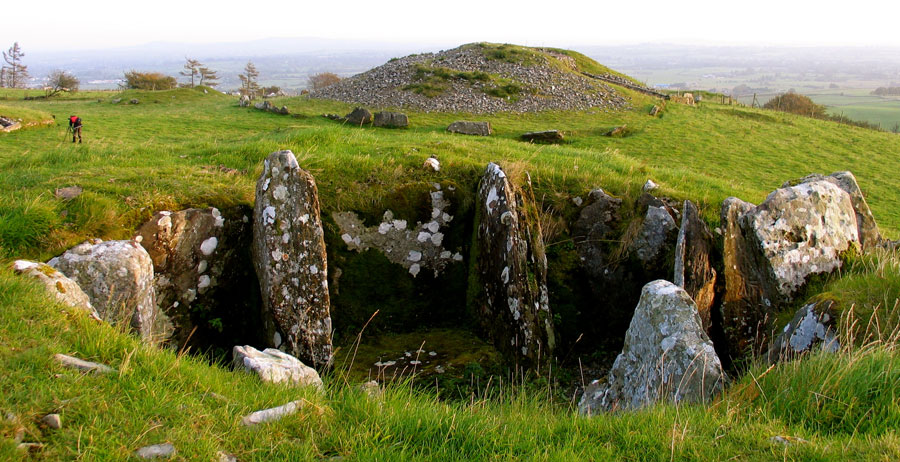This carn is 64 yards to the east of F, 63 yards south-west of L, and is 21 yards in diameter. The apex of the carn itself has disappeared, leaving from four to five feet only in height of the original structure, wanting the slabs by which the interior chambers had been covered.
These crypts had become filled up with small stones, by the removal of the roof. Directly over the chambers a thick crop of luxuriant nettles flourished, and struck their roots down into the interstices of some of the laminated flagstones forming the chambers.
During the progress of clearing out the interior, we had thus the mortification of seeing portions of some of the engraved stones crumble down, forced out by these nettle roots, before we were able to make any record of the devices on them. The direction of the entrance is due east.
The passage alone is eight feet six inches long, and four feet six inches wide; and the distance from the commencement of the passage to the back of the opposite chamber is twenty-two feet; the diameter across the chambers north and south measures thirteen feet.
The interior arrangement consists of seven compartments, formed by flagstones standing out towards the centre of the structure. The breadth of the first chamber on the left-hand side, which faces the north. Is two feet eight inches; of the second, three feet six inches; of the third, shaped somewhat in the form of a triangle, three feet seven inches at the back, its widest part; of the fourth, three feet eight inches; of the fifth, three feet seven inches at the rear, and like the third chamber, narrowing considerably towards the entrance; of the sixth, three feet ten inches and of the seventh, or last chamber, two feet eight inches.
On each of the floors of the first, second, fourth, and fifth chambers rested a square flag, about two square feet in area, and two inches thick. A quan- tity of charred bones was found on each of these flags: but in such a crushed state from the falling in of the stones upon them, that it would be difficult to determine to what portion of the frame they belonged.
On lifting up the flag on which the bones had been placed, in each of these four compartments we found immediately underneath a layer, about four inches in depth, of dry small stones, the surface portion of the layer broken very fine, from a quarter of an inch to an inch in size, and having some fragments of charred bones scattered on top, the lower portion of the layer consisting of larger stones.
In the compartment which exactly faces the east, and on the surface of these finely broken stones we found two stone ornaments—a bead and a pendant.
The bead lay about the centre of the space, covered by the flag; and the pendant under, but close to the extremity of the flag, on the right-hand side, and near the back of the compartment. The bead has been highly polished, and its being narrower on one side than the other will show that it was worn in a circular form. We conjecture that both are portions of a necklace such as has been found In 1853 by M. L. Galles in the tumulus of Tumiac, in Morbihan.
The greatest diameter of the bead is three-quarters of an inch; and the pendant, perforated by a single hole for suspension, is one inch and a quarter long. Both appear to have suffered from the action of fire; and have become so decomposed, that it is somewhat hazardous to name the materials of which they are formed.
The bead, however, resembles pale gray earthy grit, which has become soft from the decomposition of the felspathic part of the stone, or more probably is blue carboniferous limestone and the pendant yellow shale mixed with whitish particles.
The floor of the sixth compartment was covered with a closely fitting flag, three feet ten inches long, three feet three inches broad, and nine inches thick. We found no bones resting on its surface, as we had done on the other floor flags in the other compartments furnished with a slab; but on raising it we observed that it covered a layer of finely broken stones, mixed with splinters of charred bones, and having a depression of nearly a couple of inches in the centre.
This stone, as it rested on the floor, concealed the sculpturing on the lower portion of the projecting slab to the west of it to a height of twenty-two inches from its base.
Eleven of the stones in this carn are inscribed.
